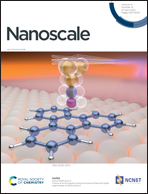Understanding anharmonic effects on hydrogen desorption characteristics of MgnH2n nanoclusters by ab initio trained deep neural network†
Abstract
Magnesium hydride (MgH2) has been widely studied for effective hydrogen storage. However, its bulk desorption temperature (553 K) is deemed too high for practical applications. Besides doping, a strategy to decrease such reaction energy for releasing hydrogen is the use of MgH2-based nanoparticles (NPs). Here, we investigate first the thermodynamic properties of MgnH2n NPs (n < 10) from first-principles, in particular by assessing the anharmonic effects on the enthalpy, entropy and thermal expansion by means of the stochastic self consistent harmonic approximation (SSCHA). This method goes beyond previous approaches, typically based on molecular mechanics and the quasi-harmonic approximation, allowing the ab initio calculation of the fully-anharmonic free energy. We find an almost linear dependence on temperature of the interatomic bond lengths – with a relative variation of few percent over 300 K – alongside with a bond distance decrease of the Mg–H bonds. In order to increase the size of MgnH2n NPs toward experiments of hydrogen desorption we devise a computationally effective machine learning model trained to accurately determine the forces and total energies (i.e. the potential energy surfaces), integrating the latter with the SSCHA model to fully include the anharmonic effects. We find a significative decrease of the H-desorption temperature for sub-nanometric clusters MgnH2n with n ≤ 10, with a non-negligible, although little effect due to anharmonicities (up to 10%).



 Please wait while we load your content...
Please wait while we load your content...